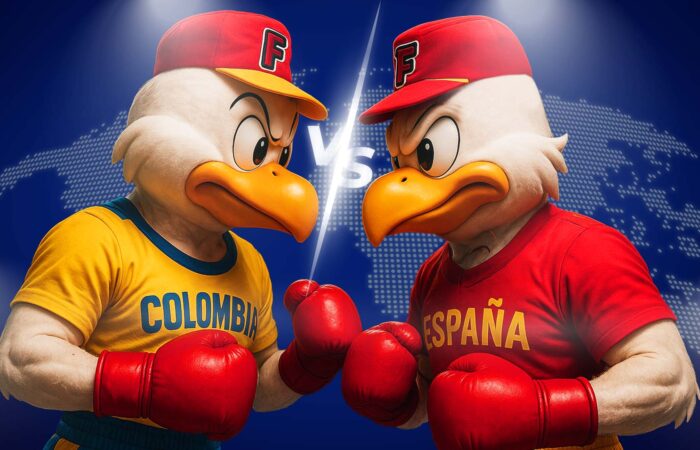Get the latest information
Suscribe to our newsletter and receive on your inbox every Monday everything you need to know on US Immigration
Most companies build strong brands at home for home usage, but what happens when you cross borders? Ensuring your brand (and, for that matter, your trademark) is protected outside your country is crucial if you plan to expand or even sell products abroad.
Trademark rights are territorial, meaning a trademark only gives you rights in the country (or region) where it’s registered. If you haven’t secured a registration in another country, you generally have no automatic rights there and others could even register your brand in that market before you do.
Why Protecting Your Brand Internationally Matters?
A trademark registered in one country (for example, your home country) does not protect your brand name or logo in other countries. As some legal expert put it, under the territoriality doctrine, a trademark has a separate existence in each sovereign territory in which it is registered or legally recognized as a mark. In other words, you must secure protection in each country you do business in.
WIPO (the World Intellectual Property Organization) similarly emphasizes that a trademark is only valid for the goods/services in the countries where it has been registered. This means that if you expand to, say, Mexico or Brazil, you need to register your trademark in those countries. Otherwise, you have no exclusive rights there.
Here are our three main reasons as to why you should be protecting (and registering) your company’s trademark right now:
There Are Risks
Failing to protect your brand internationally can lead to serious challenges.
In many, trademark rights are granted on a first-to-file basis, not first-to-use. This means someone who spots your brand’s popularity could register your brand name in their country before you do. They would legally own the mark there, potentially blocking your products or services, or even demanding payments (or a rebrand) if you enter that market. Chile, Colombia, the EU, China, for example, all follow the rule that the first person to file the trademark gets the rights, regardless of who used it first.
If you only rely on unregistered use or a home-country registration, you might find your brand name already taken in key overseas markets. Recovering a squatted or infringed trademark can be costly and difficult, so prevention is key.
Your Business Will Lose Opportunities
Even if no one preemptively registers your mark, not having protection abroad means you can’t easily stop copycats or counterfeiters in those countries. Just this month, there was a specially interesting controversy between Colombian fried chicken brand Frisby and a Spanish copycat.
It may also hurt expansion. For instance, potential partners, distributors, or investors will check if your brand is legally protected in their country. If it’s not, they may see it as a liability. In short, protecting your brand globally maintains your reputation, legal rights, and business growth opportunities.
Trademark protection is essentially brand protection, and in today’s global marketplace, even small businesses can quickly reach international customers online.
It Increases Brand’s Value
Registering your trademark in foreign markets can increase your brand’s value. It gives you the option to franchise or license your brand abroad with legal certainty. And it spares you from having to re-brand in a new country because someone else got there first.
As a World Intellectual Property Organization guide for exporters notes, it’s wise to “begin by protecting at least the trademark” of your product early. The longer you wait, the greater the chance that it will be “too late” to secure vital brand rights.
How to Secure Your Trademark in Other Countries?
Here are some of our tips and tricks to protect and secure your trademark in other countries and around the world:
Plan where you need protection
Start by identifying the countries or regions where you currently use your brand or intend to expand. As a rule of thumb, you should consider registering your mark in every country where you sell products or services, plan to do so, have local partners, or even manufacture goods.
Also think about places known for counterfeit market. Proactive registration there can help deter knock-offs. Prioritize your list: which foreign markets are most critical for your business now or in the near future? This planning will guide your trademark strategy and budget, since each jurisdiction adds cost.
Do your trademark research
Before filing in a new country, conduct a trademark search in that country’s database to see if your name or a confusingly similar mark is already registered by someone else. Many national trademark offices have online databases, and WIPO’s Global Brand Database can be a useful starting tool.
Searching is important to avoid investing in a filing that gets rejected or, worse, infringing someone’s existing rights in that country. If a similar mark exists, you might need to adapt your brand name for that market or seek legal avenues to proceed. This step is often done with the help of a local trademark attorney or agent who knows the language and local registers.
Fill directly in target countries
You can apply for a trademark by filing an application at the national trademark office of each country where you want protection. For example, if you want rights in Argentina, Mexico, and Spain, you would file separately in each of those countries’ IP offices (often through a local agent). This approach allows you to pick countries à la carte, but it can become costly and complex as the number of countries grows.
Get to know the Madrid Protocol
If your home country is part of WIPO’s Madrid System (most countries in Latin America now are members, including Colombia, Mexico, Brazil, etc.), you can use this “one-stop” international application to seek protection in multiple countries in one go.
WIPO’s Madrid Protocol lets you file a single application (in one language, paying one set of fees) and designate multiple member countries where you want your trademark protected.
It significantly streamlines the process: you apply once, through your local trademark office or WIPO, and that application, after a basic review, gets sent to each country you designated. Each country’s trademark office then examines your request under its own laws (within set timeframes). If all goes well, your mark is registered in those countries without separate filings.
The Madrid System is very convenient for brand owners and is “the top choice for international trademark registration among export-oriented brand owners,” with over 1.7 million international registrations on file.
Make good use of regional trademarks
Some regions have unified trademark systems. The European Union Trademark (EUTM) gives protection in all EU member states with one application, for example. And, in Africa, ARIPO and OAPI systems allow one registration covering multiple countries.
In Latin America and the Caribbean, there isn’t yet an EU-style single trademark for the entire region, but there are regional agreements to be aware of:
- The Andean Community (Bolivia, Colombia, Ecuador, Peru) has a common intellectual property regime (Decision 486) that harmonizes trademark laws across those countries. While you still need to file separately in each Andean country, the laws and criteria are very similar, and there is cooperation (for instance, an Andean opposition system). This makes it a bit more predictable when seeking protection in multiple Andean countries.
- Mercosur (Argentina, Brazil, Paraguay, Uruguay) negotiated a Protocol in 1995 to harmonize trademark and indication of origin laws. However, it has not been fully ratified by all members (as of the 2000s Argentina and Brazil hadn’t put it into force). Thus, in Mercosur countries you still must obtain national registrations, though the laws are broadly aligned with international standards.
Keep an eye on regional developments, but for now plan on filing in each country where you need protection.
When to Seek Legal Advice?
Protecting a brand across borders can be complex, but you don’t have to navigate it alone. Professional guidance can significantly ease the journey.
Every country has its own legal intricacies: from language requirements to classification of goods, to varying approaches on what marks are acceptable. A local expert (or an international IP attorney with a global network, like ours at LOIGICA) can help you navigate these and avoid costly mistakes.
Many companies, even large multinationals, rely on trademark professionals to guide their international filing strategy and enforcement. An experienced lawyer can help you decide where to register (based on market importance and risk), when to register (timing around product launches or priority deadlines), and how to register (choosing between direct filing vs. Madrid, and coordinating filings to leverage priority).
Protecting your brand internationally is an investment in your business’s future. It may seem daunting, but by understanding the basics —territorial trademark rights, the importance of early registration in key markets, and the tools available for international filings— you can make informed decisions.
Start with a clear plan of where you need protection, take advantage of systems like the Madrid Protocol for efficiency, and don’t hesitate to get expert help when needed. With the right strategy, you can secure your brand’s identity in markets around the world, prevent unpleasant surprises, and build an international presence with confidence.
Your brand is one of your most valuable assets. Protect it everywhere you trade!

Harry Tapias
CEO and co-founder at LOIGICA. Provides strategic immigration guidance for businesses and individuals, drawing on finance, marketing, and legal expertise from DePaul University and Nova Southeastern University. Specializes in H-1B, L-1, and PERM Labor Certification. Recognized for an empathetic and innovative approach, he has earned appointments to the boards of Vizcaya Museum and Gardens and the Miami-Dade County History Preservation Board.
This blog was written with asistance of generative AI. It is provided for informational purposes only. It does not constitute legal advice. The information presented here is based on general principles of U. S. immigration laws, as well as general information available for public search on public matters, as of the date of publication. Immigration laws and regulations are subject to change and individual circumstances may vary. If you need expert counceling on immigration matters, contact one of our attorneys.

Thanksgiving and migration: 7 legal decisions that make the difference for 2026

Trump–Petro: Real implications for colombians looking to United States



